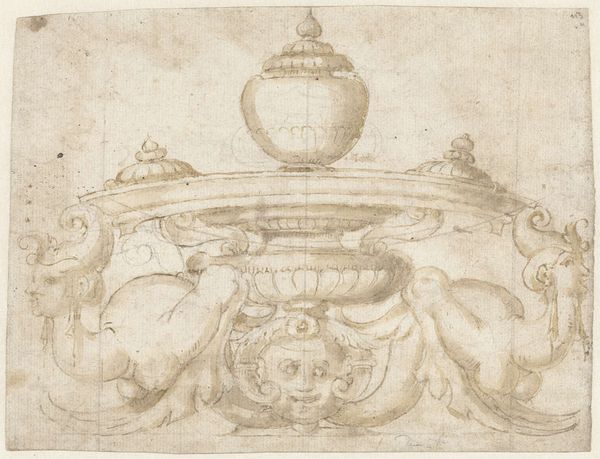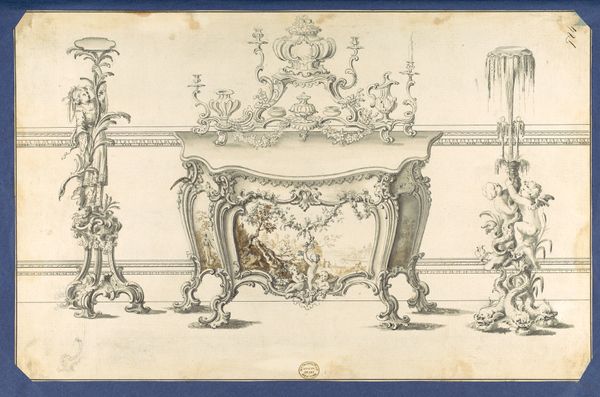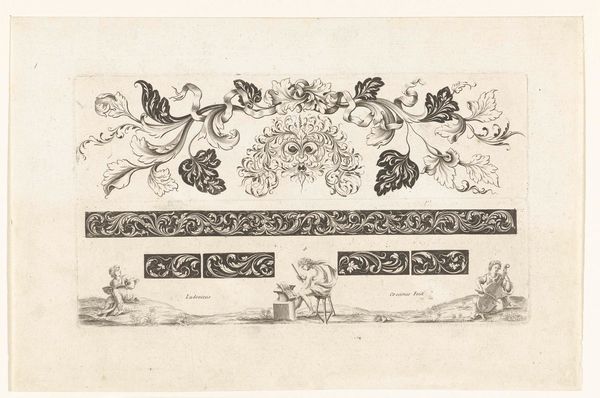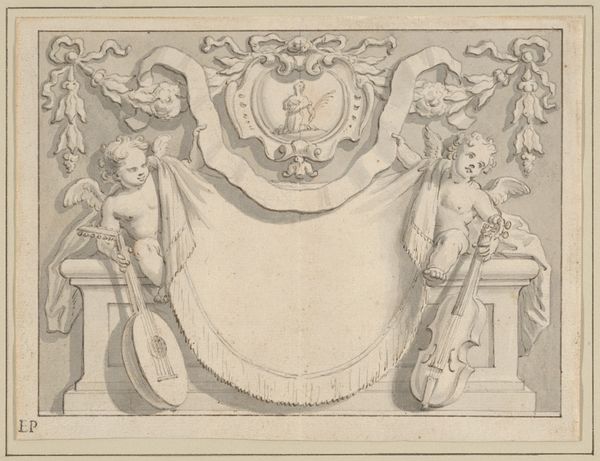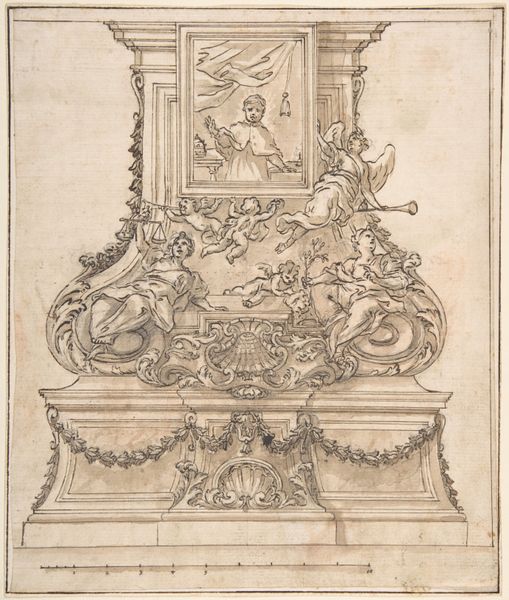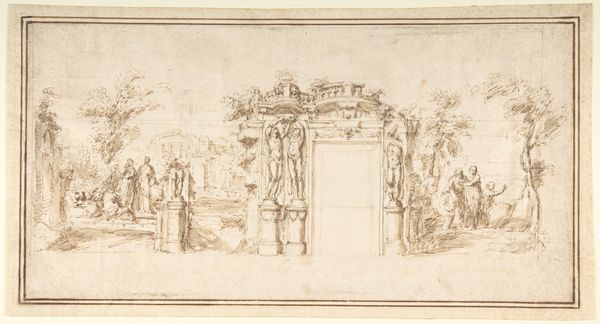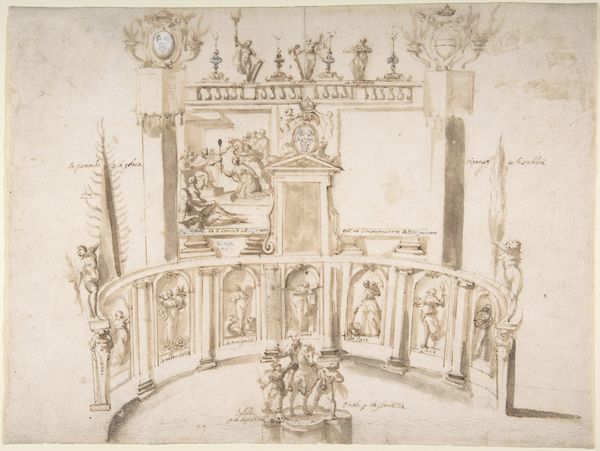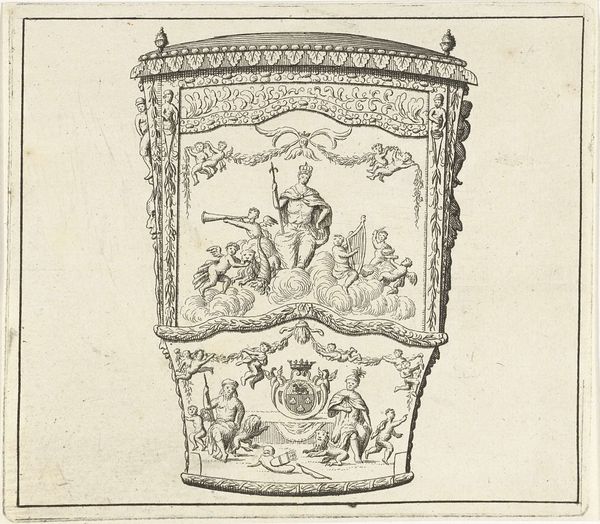
drawing, pen
#
drawing
#
toned paper
#
baroque
#
pen drawing
#
pen sketch
#
landscape
#
etching
#
figuration
#
pen
#
cityscape
#
history-painting
Dimensions: height 205 mm, width 343 mm
Copyright: Rijks Museum: Open Domain
Editor: Here we have Claude Gillot's "Design for a Wall Decoration," a pen drawing on toned paper dating sometime between 1683 and 1722. It's such a delicate piece, a flurry of ornamentation against a faded landscape. What do you see in this design, what whispers does it hold? Curator: Whispers of grandiosity, I'd say. Imagine this as a full-scale wall, wouldn’t it transform a room into a stage set? Gillot seems to revel in the sheer delight of *excess*. The theatrical figure on the right almost walks into the real world, doesn’t he? Almost like he is about to invite us in to dance with the cherubs. What sort of stories might unfold within this decorative frame? Editor: I hadn't considered it as an invitation…more like a glimpse. The landscape seems so distant, unreal, like a painted backdrop itself. Curator: Ah, but isn't that the magic of theater – illusion and reality blurring? Gillot’s Baroque spirit infuses even the natural world with artifice. The landscape isn’t so much *real* as it is *composed,* much like a stage design. This period always strikes me as one in which people sought to put themselves *in* the art as much as they hung it on the wall. Do you see what I mean? Editor: I think so! Like it is as if the world needed embellishment, some gilding, shall we say? Curator: Precisely. Think of Versailles. Here, even a wall could offer an escape into an idealized world of beauty, intellect and wit. But is this drawing beautiful or unsettling, or perhaps both? Editor: Definitely both! I can see how it creates a transition from our reality into…something else. This has been super interesting! Thanks so much for sharing your insights. Curator: My pleasure. I will always prefer a conversation that sparks thought. Now, let's find our way out of this gilded cage, shall we?
Comments
No comments
Be the first to comment and join the conversation on the ultimate creative platform.


